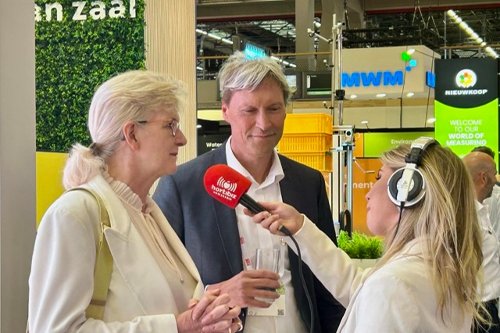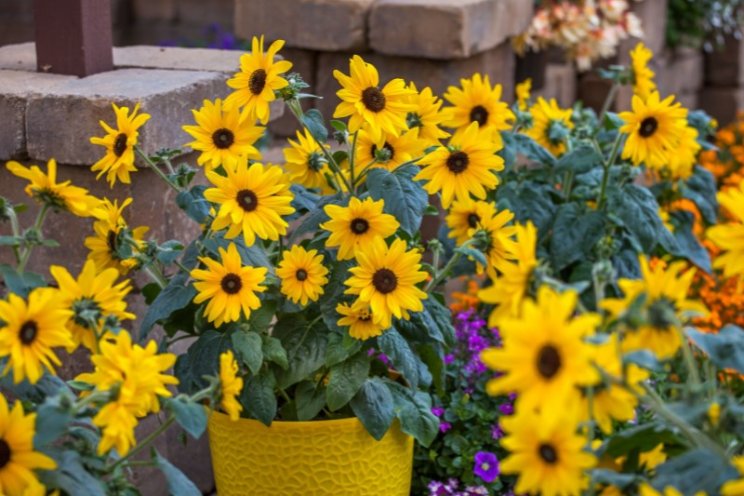Protein change on the horizon: Solutions for food systems
Added on 18 October 2024

"Inhouse Farming - Feed & Food Show" at EuroTier from 12 to 15 November in Hanover, Germany
The technological developments presented at the "Inhouse Farming - Feed & Food Show" and EuroTier influence the entire value chain. Increasingly they are applied to optimise the production of alternative proteins for the animal feed and food industry. "Our food system needs diversity, and alternative proteins play a key role in this," says Prof Nils Borchard, DLG Head of Research and Development. The industry is still in its infancy, but: "Europe and Germany are technologically and professionally well positioned to develop and manufacture high-quality products from alternative protein sources, while maintaining regional differences in European food systems," says Borchard, who chairs the DLG’s Committee for New Feed & Food.
Protein sources for the future
From basic research to the transfer of technology to practice and the scaling of production, a large number of innovative start-ups, established companies from the food industry, suppliers and renowned research institutions are creating a high-performance ecosystem for the development of plant-based, cultured and fermentation-based alternatives to products from livestock farming. Prof Marius Henkel is one of the experts in this field. He holds one of the first professorships in Cellular Agriculture in Germany and has been setting up a research centre for cell cultivation and precision fermentation at the Technical University of Munich since 2022. In addition to cultured meat, Henkel and his team are working on processes that imitate eggs and milk. "The topic is currently very much in the spotlight, with many companies being founded in the sector," says Henkel.
One of his main areas of focus is the fine-tuning of the processes that take place in the bioreactors. This is because, unlike traditional fermentation, this can only be achieved with genetically modified microorganisms. In this process, a gene that codes for the target protein is taken from a donor organism, such as a cow, and introduced into the DNA of single-cell organisms, such as bacteria or yeasts. The organism is propagated and the production of the target protein is induced in a fermentation tank. This is then separated, cleaned and dried. The powder obtained in this way can be used as an ingredient in cheese or yoghurt. Similar to cultured meat, the plant cell culture will make it possible to cultivate complete, authentic cells in bioreactors that are in no way inferior to the original.
Meeting place for investors and start-ups
Measured by the performance of the science location, many opportunities in Germany currently remain untapped. "Venture capital has been central to the growth of innovative companies producing plant-based, cultured and fermented foods," says Carlotte Lucas, Head of Industry at GFI Europe. However, she said that for the sector to make a decisive contribution to food security, new financing approaches and more cooperation with established players in the food industry are also needed.
The "Inhouse Farming - Feed & Food Show" addresses the most important players and wants to bring them together to discuss "‘where we currently stand and where action is needed," says DLG expert Borchard. The investor breakfast, which will take place on Thursday, 14 November at 9:30 a.m. as part of the DLG Expert Stage in Hall 24, is the perfect place for investors and founders to explore possible collaborations. The talks are expected to focus on technologies related to vertical farming and insect farming, which will play an increasingly important role in the food systems of the future. Farmers not only have to cope with the consequences of climate change, including more extreme weather conditions – arable land is also a limited resource.
Cultivation 2.0 in closed systems
In this context, the "Inhouse Farming - Feed & Food Show" and a large proportion of the exhibitors in Hanover will focus on the forward-looking methods of Controlled Environment Agriculture (CEA). One of these is vertical farming – a space-saving cultivation method. "It enables the production of food and other raw materials independently of weather conditions and conserves natural resources such as water and soil," says DLG expert Borchard, summing up the advantages of CEA technology.
Despite their advantages, this type of indoor systems still faces a number of hurdles. The high investment costs and high energy consumption are considered to be the greatest obstacles, as vertical farming places particular demands on the indoor climate and lighting in order to ensure optimal conditions for the growth of plants, fungi and animal organisms. Borchard: "However, exciting possibilities arise here when renewable energy meets demand, therefore minimising the ecological footprint. In Denmark, for example, such systems are operated using energy from wind turbines." One side effect of vertical farming is that: It enables food production directly where it is needed and in urban environments. Many experts therefore see the greatest opportunities for vertical farming in metropolitan areas where traditional agriculture suffers from a shortage of land.
Plant diversity for vertical farming
So far, indoor vertical farming has mainly been used for growing lettuces and herbs, known as microgreens. Now the range is to be expanded. Numerous activities are focused on precisely controlling environmental conditions to increase yield and, in particular, plant quality, while minimising energy consumption. The "inBerry" project launched in August by the Fraunhofer Institute for Environmental, Safety and Energy Technology (UMSICHT) focuses on a year-round production method for speciality crops such as strawberries, raspberries and blueberries. This "is taken to a higher level through the use of optical sensor technologies for quality determination," explains Dipl.-Ing. Volkmar Keuter, Head of the Environment and Resource Use Department.
The project is scheduled to run for several years and, in addition to data-driven strawberry cultivation, includes the development of new cultivation systems for other fruits. The example shows: Advances in sensor technology, coupled with the use of artificial intelligence, enable precise analysis and adjustment of conditions to ensure plant well-being.
Recirculating aquaculture system
Fish farming has become one of the mainstays of the global food supply. Meanwhile, half of all fish consumed comes from aquaculture. What do fish and fish farmers need? At the "Inhouse Farming - Feed & Food Show", the Aquaculture Theme Day on 13 November is dedicated to answering this question. Indoor fish farming systems, in particular recirculating aquaculture systems (RAS), are considered to be more ecologically sound than traditional net pens because they have less impact on natural waters. "This modern form of fish farming makes it possible to produce high-quality food in closed systems, regardless of their location," says Borchard. One advantage is that there is no feed loss. The automated feeding system only supplies the fish with the amount they can consume. Animal excrement is filtered out of the circulating water in multi-stage filter systems. Afterwards, there is the option of feeding these residues into a biogas plant. The process technology of the "Seawater Cube" presented in Hanover is based on this recirculation technology and allows coupling with a biogas fermentation process. The principle: The wastewater from the Cube, a watery slurry, is discharged into the liquid manure, which is then fed into the biogas plant. In this way, the organic substances of the fish are converted into a renewable energy source.
Marine fish farming directly on the farm: In Sendenhorst, around 20 kilometres southeast of Münster in Germany, Louise and Carl Niehues are committed to this idea and started farming wild sea bass last year. "Our goal is to produce a sustainable, healthy food as close as possible to the consumer," says Carl Niehues. Some 12,000 sea bass are now swimming in the five containers of his Seawater Cube facility. The system is fully automated thanks to the condition monitoring platform and requires only a small footprint, making it ideal for farms that want to expand their activities with a manageable use of resources. For Prof Nils Borchard, the example illustrates that the protein change must go hand in hand with the development of regenerative agriculture, because: "Alternative proteins are not a substitute, but rather an extension of the product range. Agriculture has a new, important role to play as a supplier of the necessary raw materials."
Further information is available at:
Inhouse Farming – Feed & Food Show: www.inhouse-farming.com
EuroTier 2024: www.eurotier.com
More news















